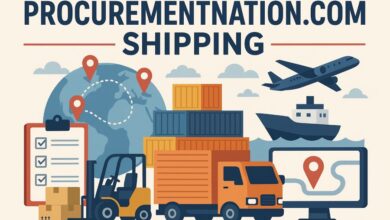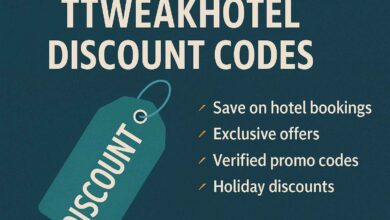The Real Challenges of Growing a New Business in a Crowded Market

Those who want to be entrepreneurs know the excitement of launching a new business. There’s the shiny new site, a sparkling product, and maybe even some eager first customers. But once the honeymoon phase is over, harsh reality bites: growing a new business is a crazy puzzle. There’s competition, cash flow chaos, and the subtle science of getting your brand to stick in a never-ending digital stream
In the modern interconnected economy, the problem is to break through. Businesses don’t perish for a lack of ideas; they die because growing is hard, hardnosed, and most times unpredictable. And the earlier you learn the obstacles, the better you are equipped to break them down.
The Brand Identity Crisis That Hits Sooner Than You Would Ever Dream
Here’s the trap most entrepreneurs don’t expect: your idea can be good, your product can work, but if your brand comes across as unmemorable or amateur, it’s never going to take off. People judge a book by its cover, especially when they’re choosing between ten similar services in five seconds or less.
This is why so many early-stage businesses trip over the same hurdle: branding that doesn’t match their ambition. You’re solving a real problem, but your visuals feel generic. You’ve built a powerful tool, but your homepage doesn’t feel trustworthy. It’s a silent killer.
Most entrepreneurs understand, perhaps too late, that brand identity encompasses more than a logo it’s the emotional handshake you give each visitor, each prospective investor, each reluctant first-time shopper.
That’s why smart businesses take the time to design logos that reflect more than just the name. A good logo becomes shorthand for the promise you’re making. It telegraphs clarity, professionalism, and confidence in one quick glance. And when your business is still small and scrappy, that kind of impact can tilt the playing field in your favor.
Growth Requires More Than Just a Great Product
It’s tempting to believe that if you just build the perfect product, then the growth will just take care of itself. But growth is never just about the product that you are selling. it’s how well you understand your customer, and how clearly you can communicate your value.
And that’s just the half of it. Because once you begin to grow, then you also need to be concerned about scaling without shattering. Can your customer support scale? Can your tech infrastructure handle more traffic? Are you building processes that can run at ten times the size?
New companies tend to run flat out without establishing the systems and practices they will require in order to make it through the next stage. It’s similar to constructing a rocket that impresses on the pad but disintegrates two minutes into flight. Scalability planning, even for your small company, is survival.
The Invisible Enemy: Burnout in the Early Stages
Let’s talk about the psychological side of the startup grind. Because here’s something that doesn’t get much play in growth strategy books: founder burnout is real, and it’s lethal.
When you’re building something from scratch, it’s difficult not to invest every waking moment into it. You’re reading emails at midnight. You’re tweaking the landing page copy for lunch. And somewhere in between, you forgot to eat breakfast. for three days.
But here’s the catch: burned out founders make reactive decisions. They lose strategic vision. They start chasing growth hacks instead of building real momentum. And just like that, the engine starts to sputter.
Sustainable growth depends on clarity, consistency, and pacing. That’s true for your team, your product development cycles, and most importantly yourself. If you’re not protecting your mental fuel, even the best marketing plan won’t save the business.
Locating the Right Audience Before You Locate the Right Channel
Another oldie but goodie: assuming your problem is distribution, when in reality it is targeting. Thousands of businesses squander advertising budgets trying to “get the word out” before they’ve determined who needs to hear it.
Your best growth happens when your messaging lands squarely on the needs of a specific audience. And that takes more than demographic research, it also takes understanding what emotional levers, trouble spots, and phrasing your target customer is moved by.
With that kind of understanding, your growth plan is more precise. You’reyou’re building conversations, you’re building real demand.
And when your brand imagery, voice, and product promise all communicate on the same language as that target, you’re not only growing—you’re nurturing loyalty.
Standing Out When Everyone Else Is Screaming
It’s noisy out here. Every niche is saturated. Every platform is noisy. Every potential customer is bombarded with messages 24/7. So how do you grow when competition is screaming from every angle?
The answer is sharper. More storytelling. Smarter positioning. Cleaner differentiation.
That might mean zeroing in on your audience to drive maximum impact. It might mean sharpening your visual brand to build emotional contrast. It might mean taking a bold point of view in your category that makes you indelible.
Whatever your market, whether a playful atmosphere in a somber environment or a daring visual identity crafted with thoughtful design logos that stop the scroll, you need something that demands attention and inspires trust. And it starts with understanding exactly what you’re offering—and why it matters.
Growth Isn’t Linear
Perhaps the hardest reality to accept is that growth doesn’t occur on a tidy linear upwards. There are certain months where you’ll double your users. Others where you can’t budge the needle. A post you wrote out of a fog of coffee at 2 a.m. becomes your best signup driver one week. Other times your well-crafted email campaign crashes.
This uncertainty is all part of the journey. What matters most is resilience, iteration, and staying grounded in your core value. Great businesses aren’t those that never fall down—the great ones are those that get back on course quickly and keep coming forward.
Growth comes from momentum. Momentum comes from movement. So keep moving intelligently, on purpose, and with a focus on what makes your business not just useful, but unforgettable.
Let’s Recap Without Actually Recapping
If you’re stumbling through the rock-strewn terrain of early business success, don’t panic, you’re not alone and you’re not crazy. It’s tough. It’s fast. It’s full of buried landmines and surprise doors.
But with the strong brand foundation, the authentic understanding of your people, and gear that supports your message visually and emotionally from the manner in which you get to your value proposition to the manner in which you create logos that have impact, you’re not only expanding. You’re building an impossible-to-miss business.



